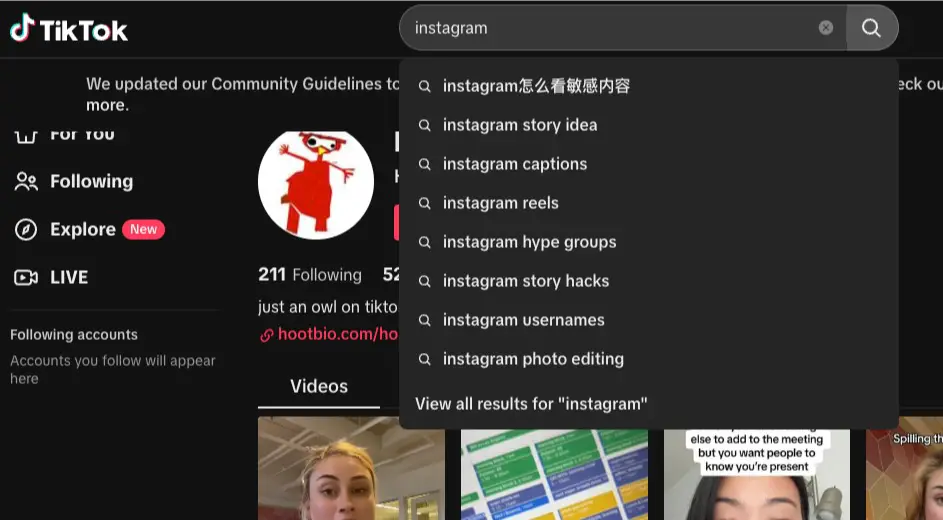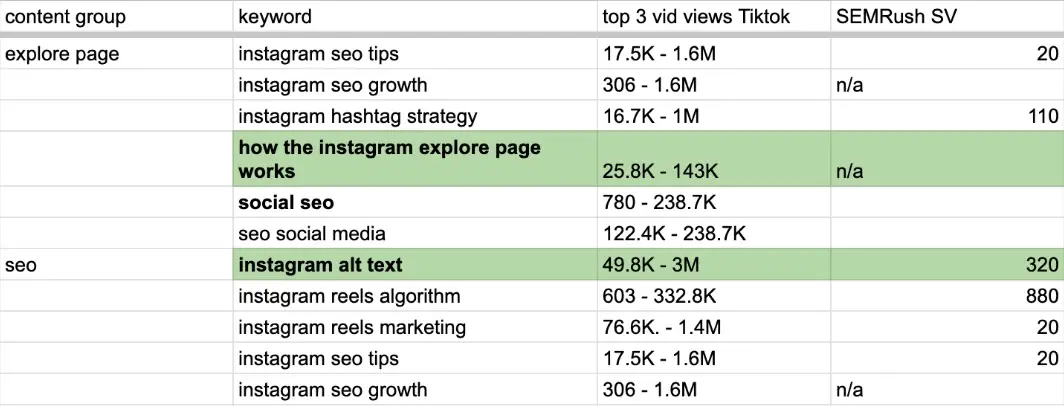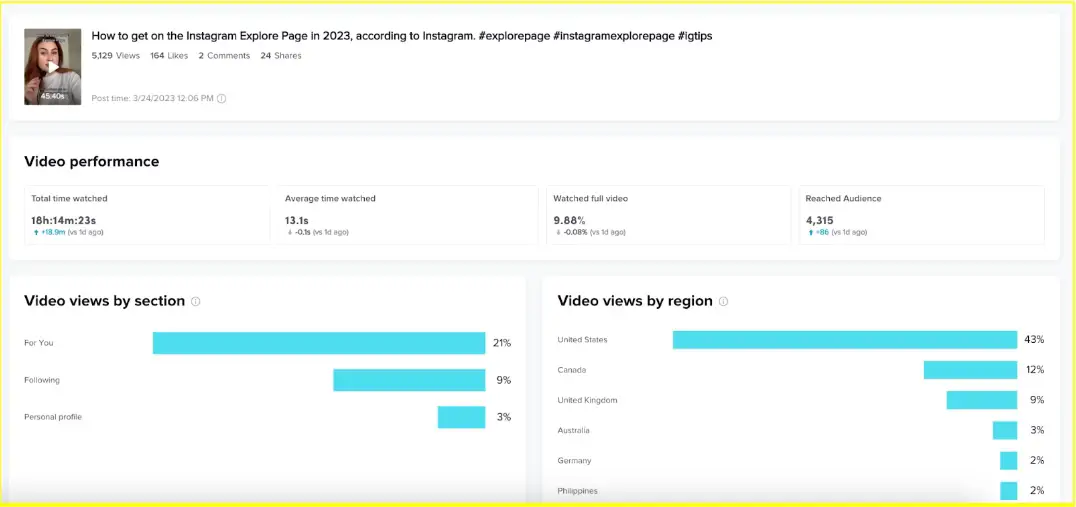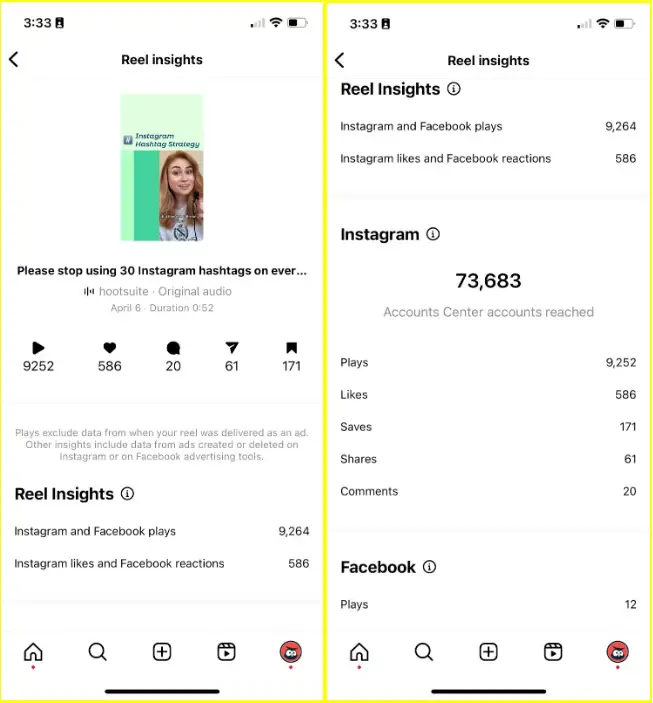Do the SEO tactics we use on Google also work on social media? In this article, Hootsuite’s Inbound Marketing Strategist, Liz Stanton, tries to find out.
Have you ever discovered a new brand via Instagram’s Explore page? Do you turn to TikTok to find out why your plant is dying? Suppose you’re like roughly 40% of Gen Zs. In that case, you’re using social media instead of Google to search for product reviews, discover how to perform specific tasks, and learn more about your favorite subjects.
Also Read | The Reality of Careers in Social Media: Insights from Hootsuite’s Latest Report
And if you’re like roughly 100% of social media managers, you’re scrambling to figure out the best way to optimize your social content so those searchers find your posts instead of your competition’s.
But what’s the best way to ensure social platform algorithms easily understand your content? If we know how search works on platforms like Google, can we apply those insights to TikTok and Instagram?
In a recent experiment, Hootsuite’s blog editorial team paired up with our social team to put these questions to the test.
Our hypothesis was simple: Using traditional search engine optimization (SEO) tactics when creating social content can help posts gain more reach (i.e., get more people to see them). Let’s dive into the findings.
Traditional SEO vs. Social SEO
In traditional SEO, content strategists target specific keywords and create content to match the search intent (aka what someone’s actually looking for). It’s all about giving the algorithms that control Google’s search results as much context as possible so your content ranks closer to the top of the list.
Here at Hootsuite, we like to think we’re pretty good at optimizing content for Google. We’ve got hundreds of high-ranking blog posts that drive millions of visitors to our site each month.
In theory, social SEO works just like traditional SEO. You create content that answers specific questions and makes it easy for social algorithms (for our experiment, specifically Instagram’s and TikTok’s algorithms) to serve that content to the right audience.
But no one knows exactly how social SEO works just yet.
Methodology
While traditional SEO is well-established and has plenty of tools that make keyword research and performance tracking easy, social SEO is a brand-new game, so we had to get a little scrappy.
Instead of relying on our favorite SEO tools (shout out to SEMrush and Keyword Planner), we used the platforms’ robust search and autocomplete functions to create keyword clusters and plan content matching our social marketing expertise.


Once we’d settled on our target keywords, we worked with our friends on the social team to create five “search optimized” videos for Instagram and TikTok.
@hootsuite Instagram alt text is your social SEO secret weapon #alttext #instagramtips #instagramseo
For each video, we made sure to include our keywords in three places: in the caption, as on-screen text, and in the script at least once.
Then, we posted our videos on both TikTok and Instagram, using Hootsuite’s Best Time to Publish feature to make sure they went out at the right time. We gave each video four weeks to collect views before analyzing our results.
Oh, and a note: In a perfect world, we’d compare our results against a non-optimized control group. But that approach would create duplicate content and a repetitive experience for our audience. This would, obviously, skew the results and drag down social performance for our other videos.
To avoid this, we randomly selected standard content from each channel to use as a control group. The content in this group did not use any of the social SEO tactics listed above.
Measuring success
If you’re not already digging into your social analytics on a regular basis, you’re missing out on a ton of valuable information.
TikTok and Instagram’s analytics allow you to track who’s watching your videos, where they found your content, how many viewers chose to engage with it, and much more.

For TikTok, we used views from the For You page as our key success metric. We figured that a successfully optimized video would be more likely to appeal to a wider audience and appear on more FYPs.

For Instagram, we looked at views from non-followers for the same reason. After all, the goal of SEO is to serve our content to people who don’t already know us but are interested in our niche.
Final results
Our experiment made one thing VERY clear: using social SEO to optimize your content can help you increase both reach and engagement on TikTok and Instagram.
TikTok

On TikTok, our optimized videos earned 33% more views from people new to our account (aka the FYP). They also had a slightly higher average engagement rate, up from 4.59% to 4.75%. This could be partially because these videos addressed topics people were already searching for and were naturally more likely to engage with.
Our SEO-optimized TikToks also earned 39% more unique views when compared to our control group.
The biggest TikTok takeaway: Optimizing for keywords can get you ~40% more views, including 33% more views from the FYP.

Our Instagram results were a little more mixed.
Unfortunately, our experiment’s best-performing Instagram videos were accidentally boosted, so our organic results were lost. (But we took comfort in knowing that these posts were automatically boosted because of how well they were performing. If you’re not trying to run an experiment, Hootsuite’s handy automated boost settings are a lifesaver!)
The accidental boost skewed our calculations (we’ve labeled the skewed numbers with an asterisk*), but we noticed fewer non-followers than the control saw our SEO-optimized content.
However, our SEO-optimized Instagram videos still saw higher total and average engagements. Optimized videos earned 25% more total engagements and a higher average engagement rate (4.0%, up from 3.1%).
Due to our boosted post mishap, we can’t say with 100% certainty that Instagram reacts as positively as TikTok. But we hope to rerun this experiment soon to confirm this hunch.
For now, we’ll just say that using traditional SEO tactics for your TikTok content can result in more reach among non-followers, plus more engagement. And using traditional SEO tactics with your Instagram content can result in more engagement (and maybe more reach).
The biggest Instagram takeaway: By optimizing for keywords, you may find yourself with a ~33% bump in engagement rates
Top Takeaways
Curious about incorporating social SEO into your own social strategy? Here are a few tips to help you get started:
- Do your keyword research. SEO pros often perform keyword research once per quarter, but social moves fast. We’d recommend doing keyword research on TikTok and Instagram at least once a month, but pair it with your own content planning cadence.
- Review the content that’s already showing up for your chosen keywords. Take note of the top performers; this will tell you what people are looking for when searching these keywords. Watch these videos, figure out what’s missing, and make a plan for how you can do better.
- Use your keywords wisely. There are three great places to insert keywords in social videos: in your on-screen text, captions, and script. YouTube, TikTok, and other video-first social platforms crawl your transcripts to understand what your video is about. They’re looking for keywords to help categorize your content, so make their job easier (and help your content perform better) and say those keywords out loud.
- Optimize the right content. Some content works better for keyword optimization, like your educational videos. Don’t try to stuff keywords into trending content.
- SEO shouldn’t be your only focus. SEO keywords should supplement your existing social strategy, not replace it. Don’t skip out on a relevant trend because it doesn’t align with your keyword targets.
[box]Liz Stanton is an Inbound Marketing Strategist and associate editor of the Hootsuite blog. Before joining Hootsuite in 2022, Liz worked as a brand strategist, content editor, and digital campaign manager. When she’s not working on new content for the Hootsuite blog, you’ll find her scrolling Instagram and TikTok in search of the latest social media trends.[/box]
